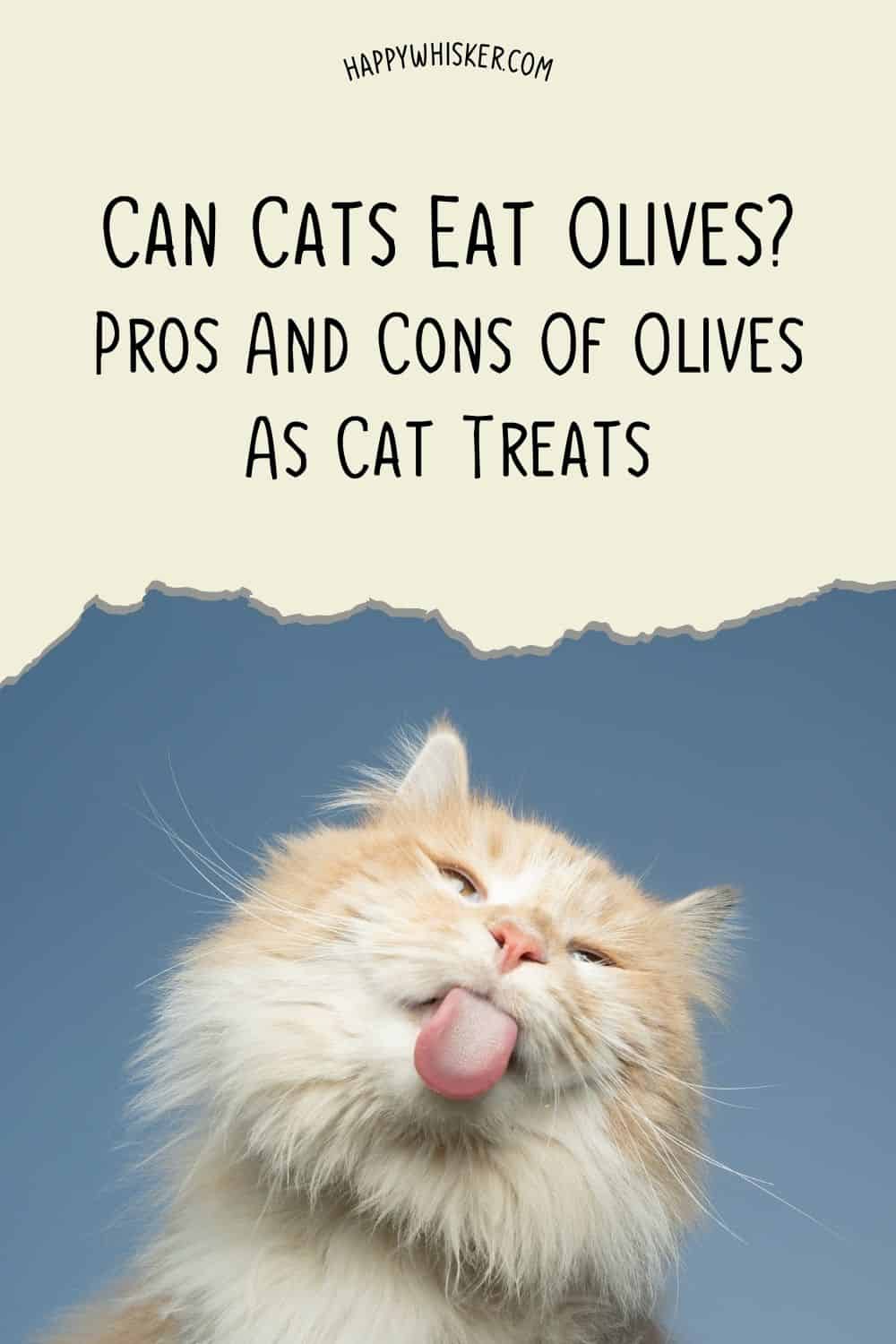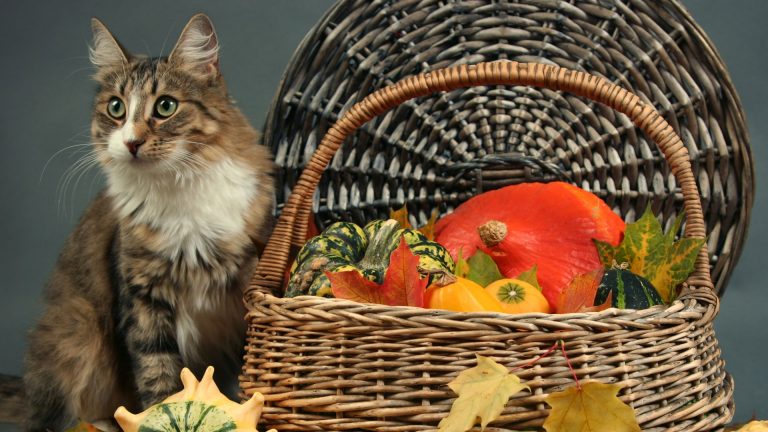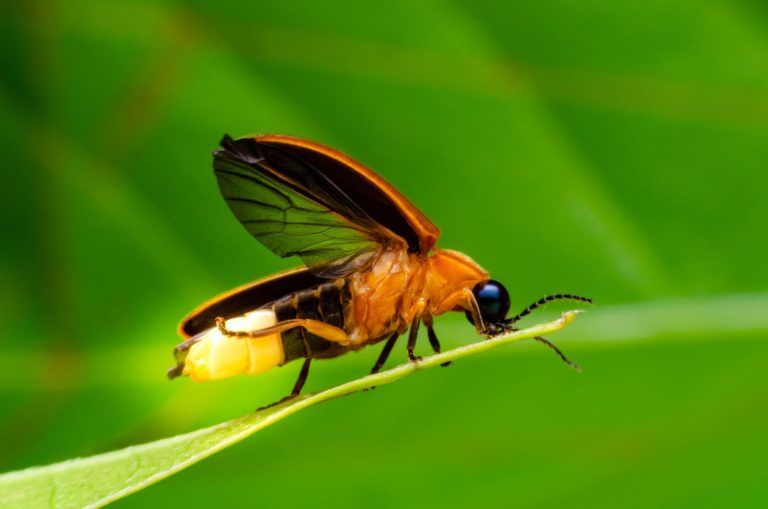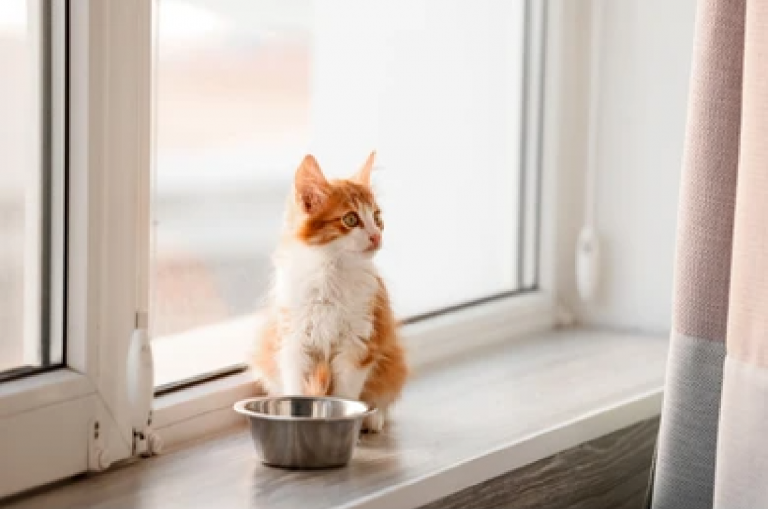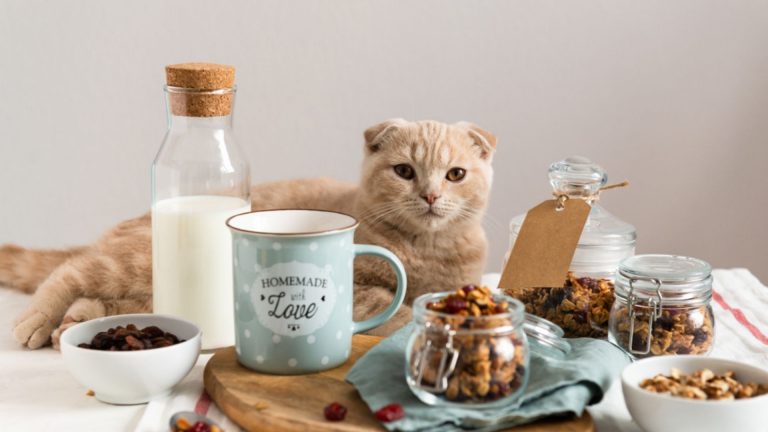Can Cats Eat Olives? Pros And Cons Of Olives As Cat Treats
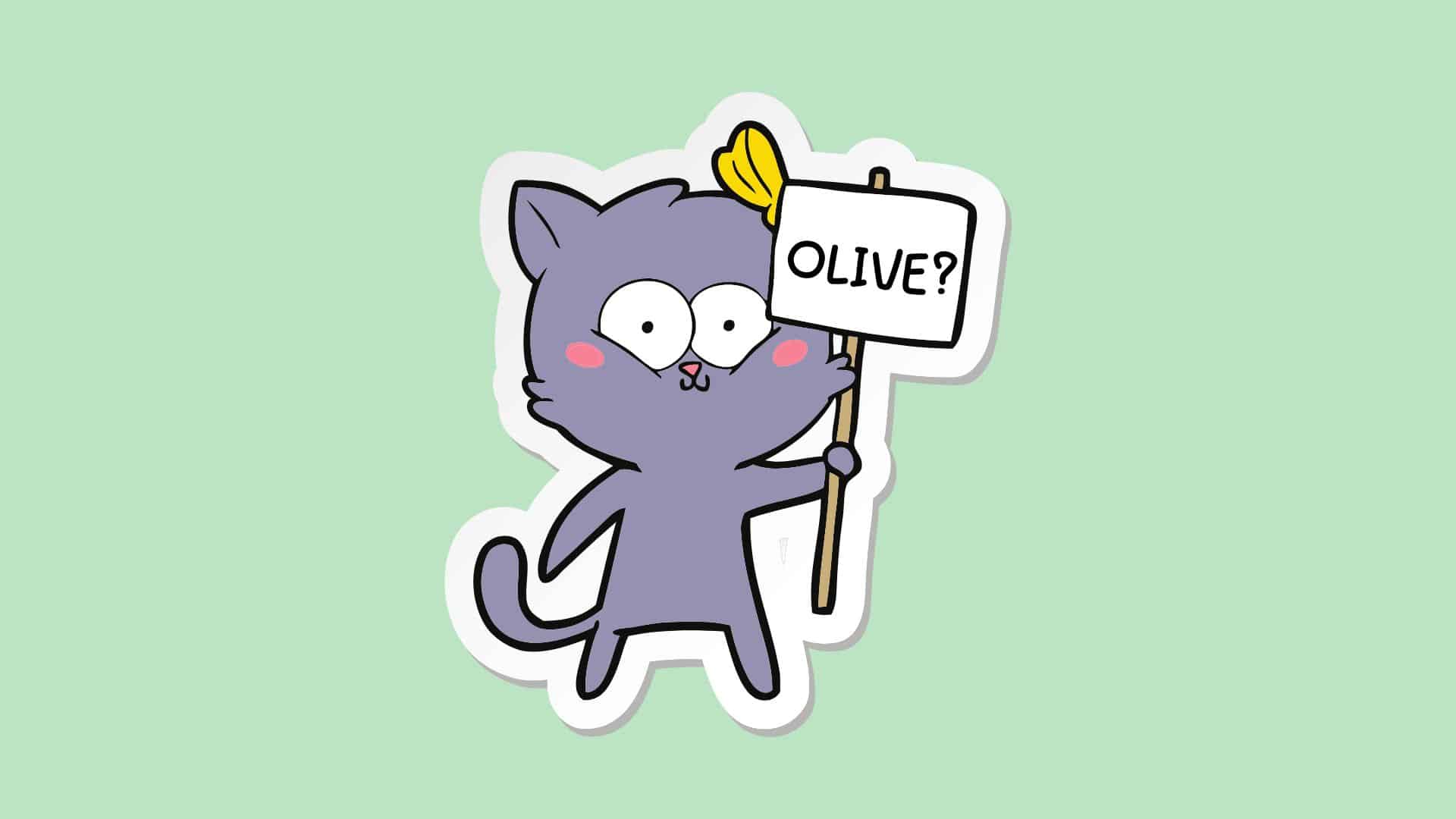
If you’re making a salad or pizza, there is a high chance your cat will show up immediately after you’ve opened a can or a jar of olives. Should I give my kitty an olive or not? Can cats eat olives?
Yes, cats can eat olives! Cats enjoy a lot of different human foods, and olives are no exception. They are non-toxic and can be a treat you give your cat two or three times a week.
However, there are some things you need to be aware of before giving your cat olives (such as health risks associated with olive consumption), and we will go over each of them! I’ve also prepared a few interesting photos for you to enjoy!
Can Cats Eat Olives?

It’s hard to say no to your kitty’s big eyes when they ask you for a treat. Luckily, in the case of olives, you don’t have to say no.
Small quantities of olives will do your cat no harm and even provide you with some health benefits! However, large amounts of olives are associated with specific health risks, such as sodium poisoning.
Think of olives only as an occasional treat, not a substitute for a whole meal (although I’m sure your kitty would disagree on this).
What’s The Perfect “Olive Portion”?
Now that you know olives are safe in small quantities, you must be wondering, Well, how many olives is the perfect amount?
It’s recommended to give your cat one olive or even less than a whole olive.
Although olives are not toxic for cats, giving your cat a bunch of olives is still not recommended due to a few health risks associated with consuming olives in large quantities, which I will discuss later in this article.
How Often Should You Feed Olives To Your Cat?
After introducing your kitty to olives, you should wait a day or two to see if your kitty experiences any side effects. If your cat seems to handle them well (does not experience any diarrhea, for example), then you can continue giving olives to your kitty.
Feeding your cat olives two or three times a week is okay, even though olives should be a once-in-a-while treat.
You should know that olives are not usually a part of a balanced cat diet (cats are carnivores, and they need meat-derived protein primarily). Think of olives only as extra snacks or treats you can occasionally give your cat.
Green Olives Vs. Black Olives

Olives are safe for cats, but does that go for both green and black olives? The answer is Yes!
Green olives are unripe, while black olives are ripe olives. However, the two differ in flavor; black olives are usually a bit more bitter than green ones.
Black olives contain more oil and less salt, which means they’re a slightly better option than green olives, considering salt is very bad for our felines.
What About Stuffed Olives?
Apart from regular green and black olives, olives can also be stuffed with various things.
For example, olives stuffed with pimento are very popular and can be easily found on the shelves of many food stores. Olives can also be stuffed with different types of meat, herbs, and seasonings.
It is best to be careful about giving your cat stuffed olives, as the stuffing might be potentially toxic for your cat. Cats don’t tolerate spices very well, so avoid all olives that have -stuffing containing spice.
It’s best to play it safe and avoid every type of olive stuffing other than olives with pimento (these stuffed olives are safe).
Suggested: Can Cats Eat Beans? Everything You Need To Know
Our Felines Really Like Their Olives, Don’t They?

Do cats like olives, or do they love olives? Most cat owners will tell you their furry friends begin salivating as soon as they set their eyes on olives.
Olives contain isoprenoids, substances similar to nepetalactone (a chemical compound found in catnip). Remember cats’ behavior when they eat or smell catnip – they become very playful and funny, as if someone turned on the “be silly” switch!
Similar to nepetalactone, isoprenoids bind to receptors in a cat’s vomeronasal organ, resulting in a similar effect as if a cat had some catnip. Considering olives make cats happy, similarly to how catnip makes them happy, it’s perfectly understandable why felines love olives so much!
Pros Of Giving Olives To Your Kitty
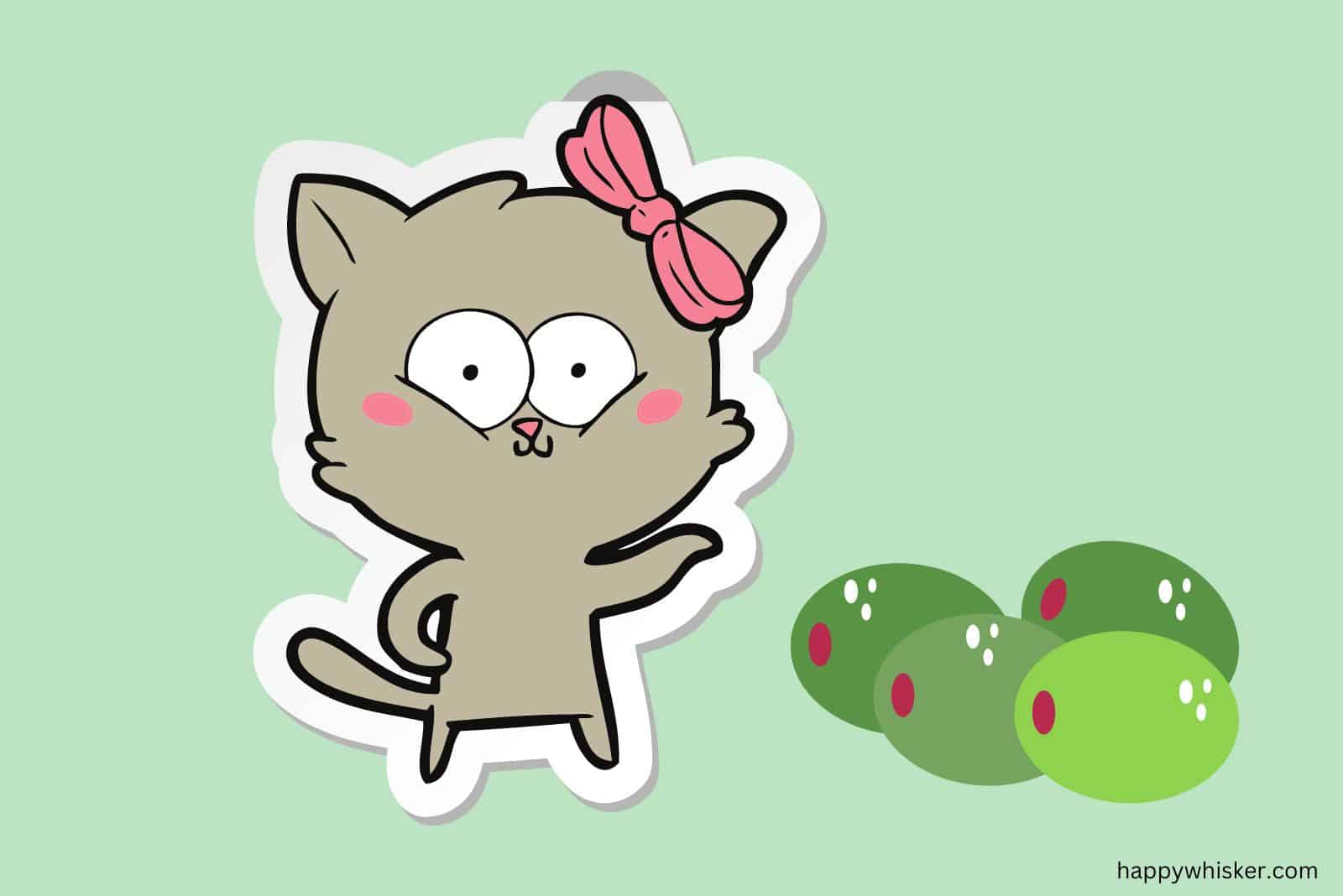
If your kitty is a firm olive-lover, or you’re a cat owner interested in learning the benefits of olives, I’m sure you’d love to know why olives are a healthy cat treat.
High Concentration Of Vitamins And Minerals
Olives are known for containing a lot of vitamins and minerals, such as:
• Vitamin A
• Vitamin B
• Vitamin C
• Vitamin E
• Calcium
• Iron
• Magnesium
• Potassium
Eating olives will provide your cat with all these vitamins and minerals, boosting your cat’s immune system, skin, and coat health!
However, olives should just be an additional source of these vitamins and minerals, as no occasional snack (such as olives) can replace the high-quality cat food that a cat eats daily.
They Have Antioxidant And Anti-Inflammatory Properties
Oxidants are reactive molecules that damage cells and are responsible for causing many different diseases and inflammations. Luckily, olives are a great source of antioxidants, molecules that “fight off” oxidants.
Therefore, eating olives can help your cat’s arthritis symptoms, as arthritis is a form of inflammation. Apart from helping ease arthritis symptoms, olives are great for heart health and reducing the risk of cancer.
Cons Of Giving Olives To Your Kitty
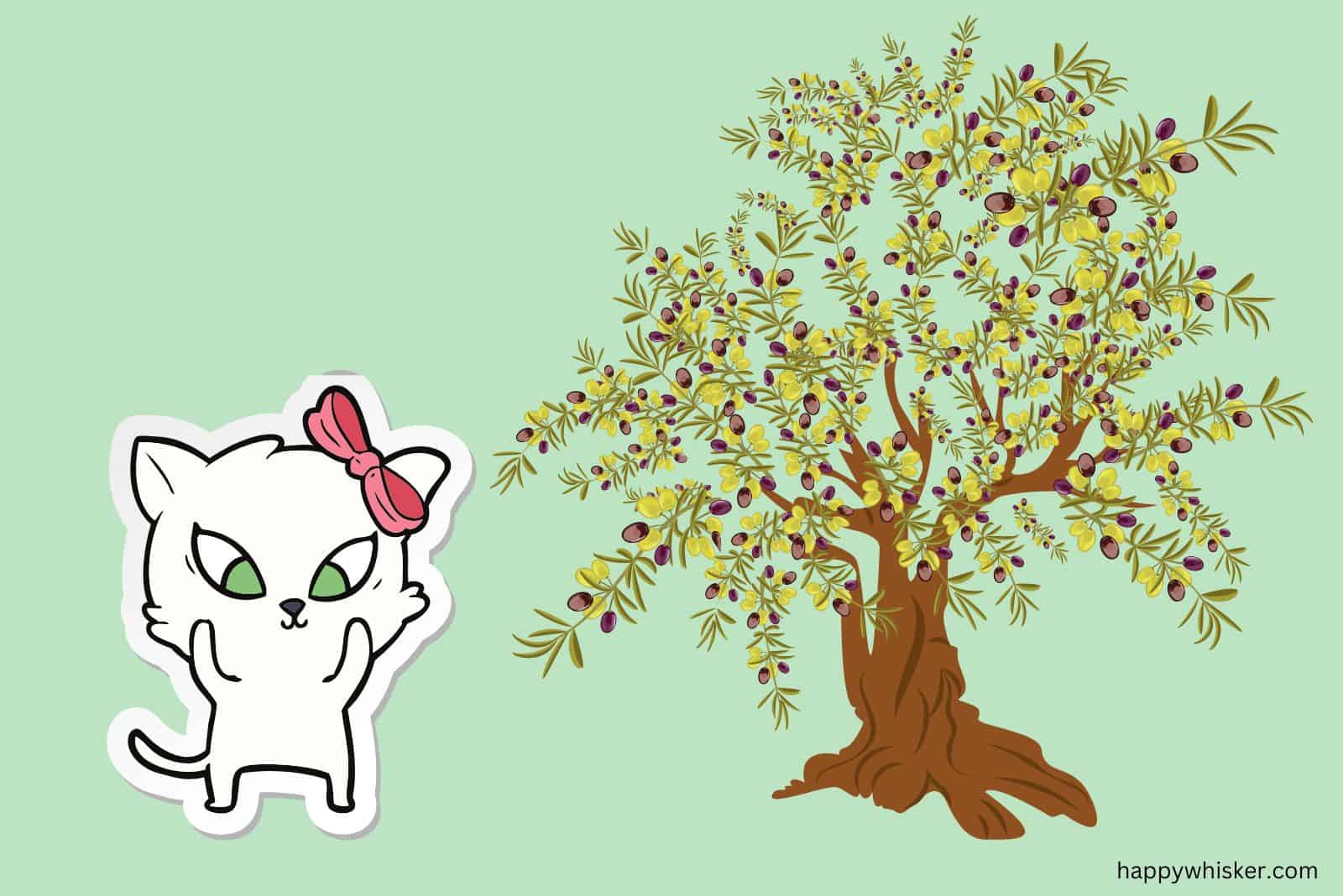
Although olives are healthy, they’re still not supposed to be a regular part of a cat’s diet, for a number of reasons.
They’re A Choking Hazard
If you’ve bought regular olives, you’ll have to manually remove the pits whenever you give them to your cat. If you overlook removing a pit, this can be a potential issue for your cat.
Pitted olives have their pits removed, making them safer for cat consumption (and human consumption too). If you want to continue giving your cat olives, buy pitted ones.
However, olive pits are not huge, and I’ve personally never heard of any cat choking on an olive pit.
They Contain A Lot Of Salt
If you’ve bought canned olives, they’re most likely packed in brine. Hence, the olives will contain a considerable amount of sodium.
Cats should not have a lot of salt, as having a diet with a high sodium content is associated with heart disease and kidney disease. Eating a lot of foods that are high in sodium can potentially lead to sodium poisoning.
Symptoms of sodium poisoning include vomiting, diarrhea, thirst, and loss of appetite, and they are very unpleasant for the cat.
Should Not Be Given To Diabetic Cats
When ingested by diabetic cats, studies have shown that olives can increase insulin sensitivity. Therefore, never give your diabetic cat olives.
See Also: Can Cats Eat Pasta? Wait A Meow-Ment!
How Should You React If Your Cat Eats An Olive Pit?
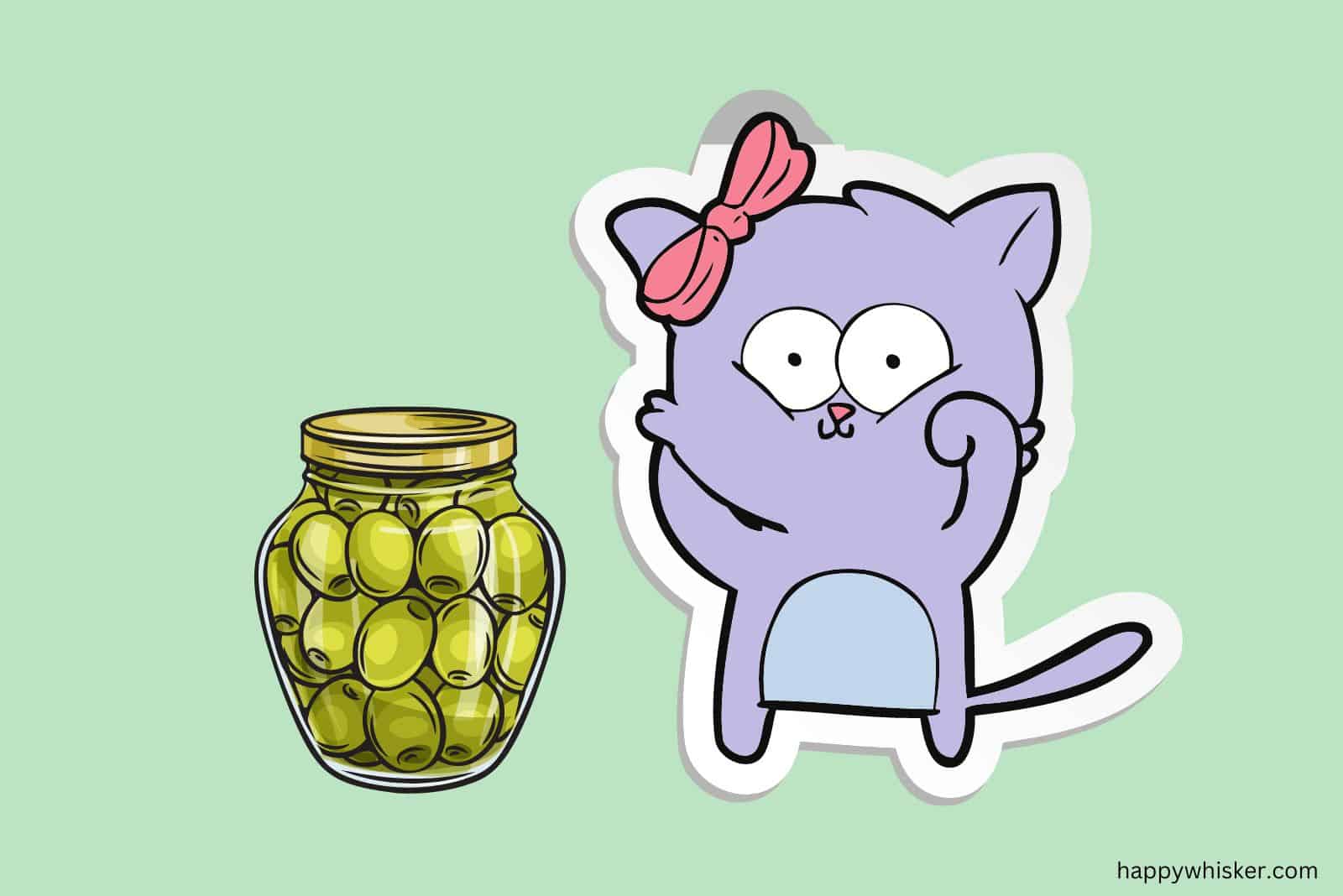
There is a chance you forget to take out the pit of olive or your cat eats a regular olive unattended. Either way, is eating an olive pit dangerous for cats?
You don’t need to worry about eating an olive pit, as it will simply pass through your cat. Essentially, your cat will poop it out.
However, it’s best to be safe and keep an eye on that open jar of olives and ensure you’ve definitely taken out the olive pit before giving it to your cat.
If your cat eats a bunch of unpitted olives, that could be a problem, as a large number of pits could cause an intestinal blockage. However, this is very unlikely to happen.
What About Olive Oil? Is It Cat-Safe?
Absolutely! Feel free to give your cat a tablespoon of olive oil once in a while, as it is not only non-toxic but also very healthy!
Small quantities of olive oil are known to boost cats’ immune system, help get rid of hairballs, relieve constipation, and reduce the risk of heart disease.
If you decide to give your cat olive oil, make sure it’s 100% extra virgin olive oil, as it’s a very high-quality olive oil that will give your cat a lot of health benefits.
However, excessive olive oil consumption by cats might result in diarrhea, which is not something you want. Therefore, give your feline only very small quantities of olive oil, such as a tablespoon or even less!
What About Olive Leaves And Branches?
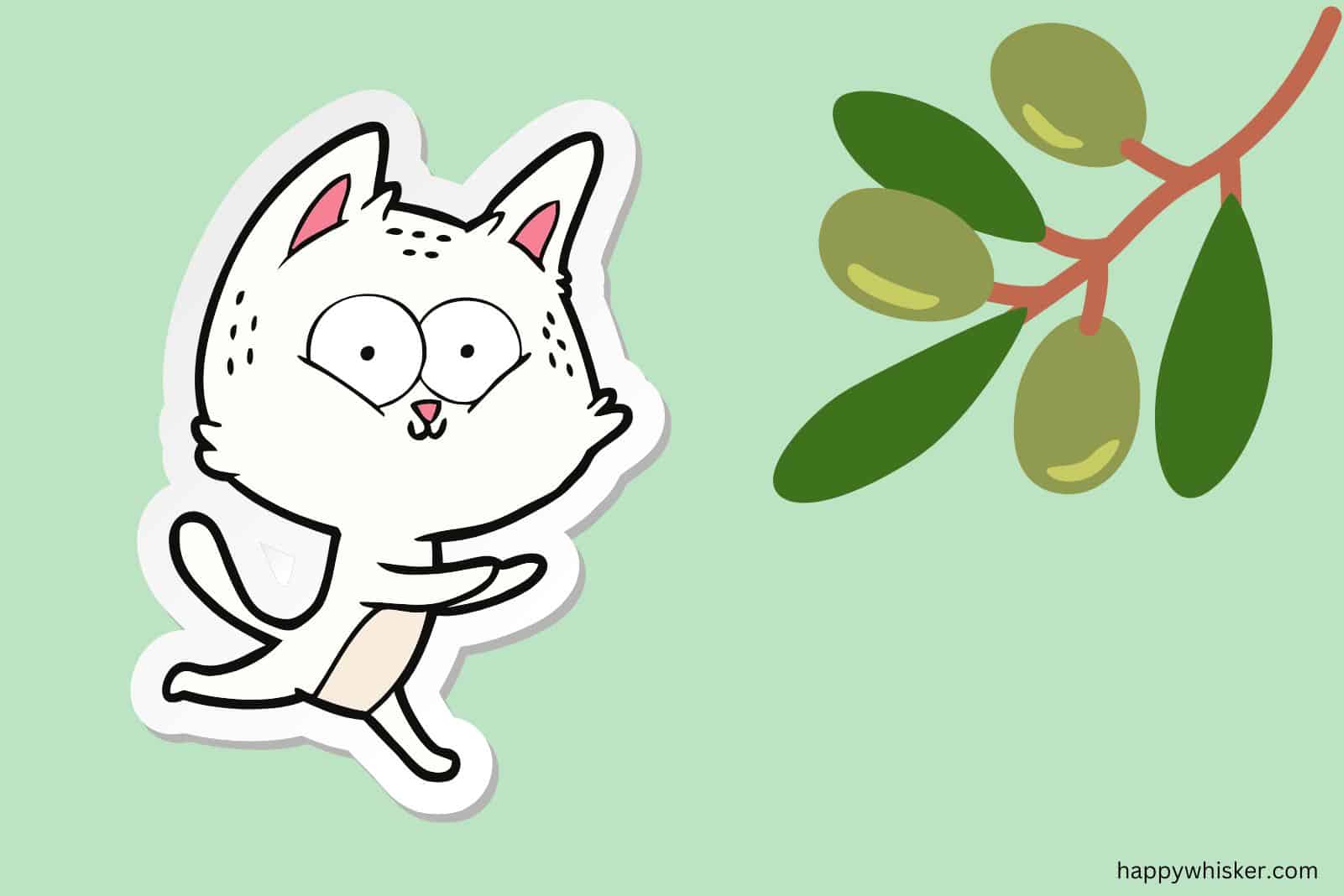
Besides olives and olive oil, it’s also safe for cats to have olive leaves and branches! Some kitties enjoy munching on them!
Olive leaves and branches benefit cats as they help clean their teeth, and work wonders for a cat’s coat, making it very shiny! Besides a smooth coat, your cat will also have better immunity!
Therefore, if you see your kitty nibbling on olive leaves or branches, know that it’s good for their health, as long as they don’t overdo it. Remember – moderation is key.
Final Thoughts
Olives are known to be a tasty addition to our food, but our felines also seem to enjoy them very much! So, can cats eat olives?
Yes, you are allowed to occasionally treat your cat to olives. One whole olive or even less than that is the recommended amount to be given to cats a couple of times a week.
Olives offer a lot of health benefits when taken in small quantities. However, large quantities are associated with adverse side effects, such as vomiting and diarrhea. Therefore, limit your kitty’s olive intake (even though your kitty might not like that idea so much)!
Olive oil, olives stuffed with pimento, olive leaves, and branches are also safe and will offer health benefits to your kitty. Just watch how your kitty’s coat gets progressively nicer and smoother!
Related Articles:
Can Cat Eat Sardines? Many Benefits And A Couple Of Risks
Can Cats Eat Pumpkin? Prepare Your Kitty For Spooky Season
Can Cats Eat Honey? Health Benefits And Side-Effects
Like this post? Share or pin it for later!
